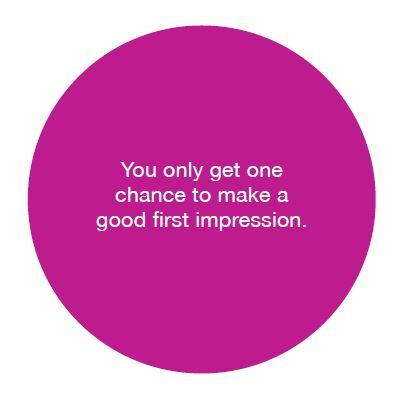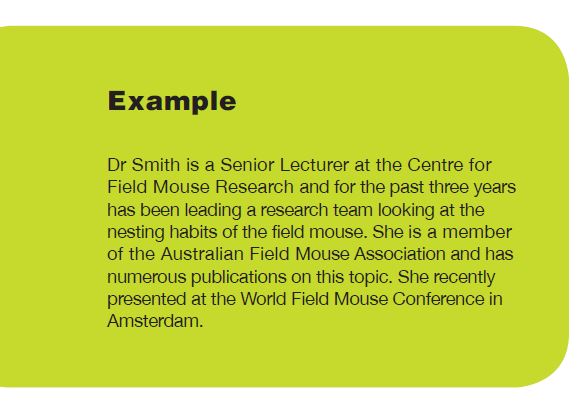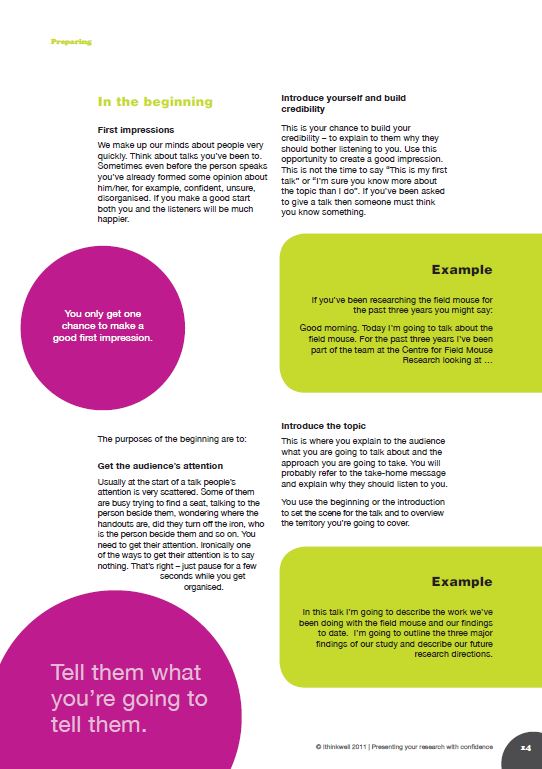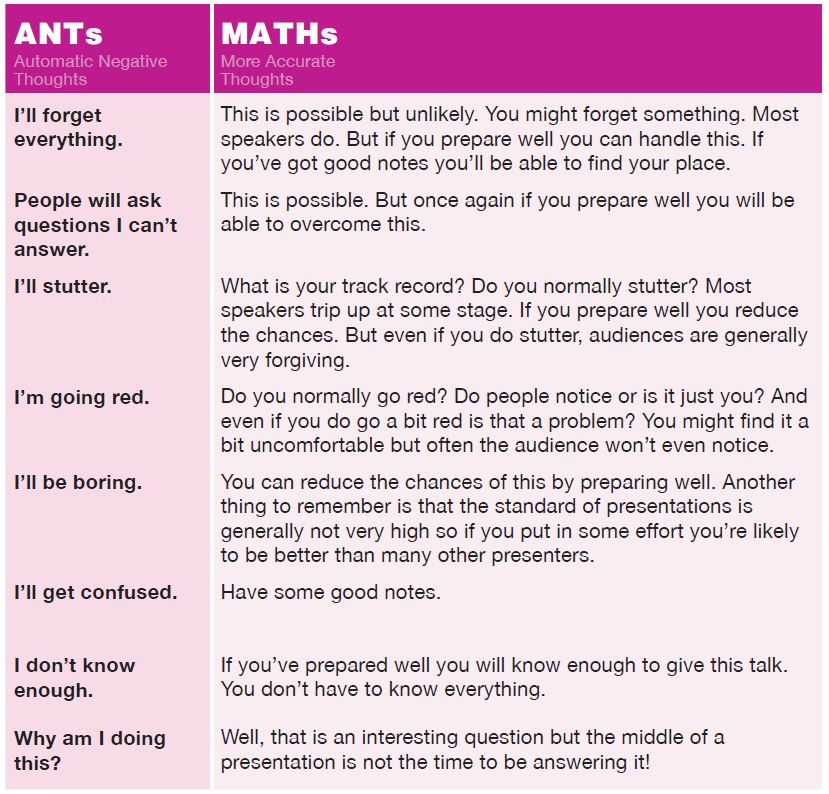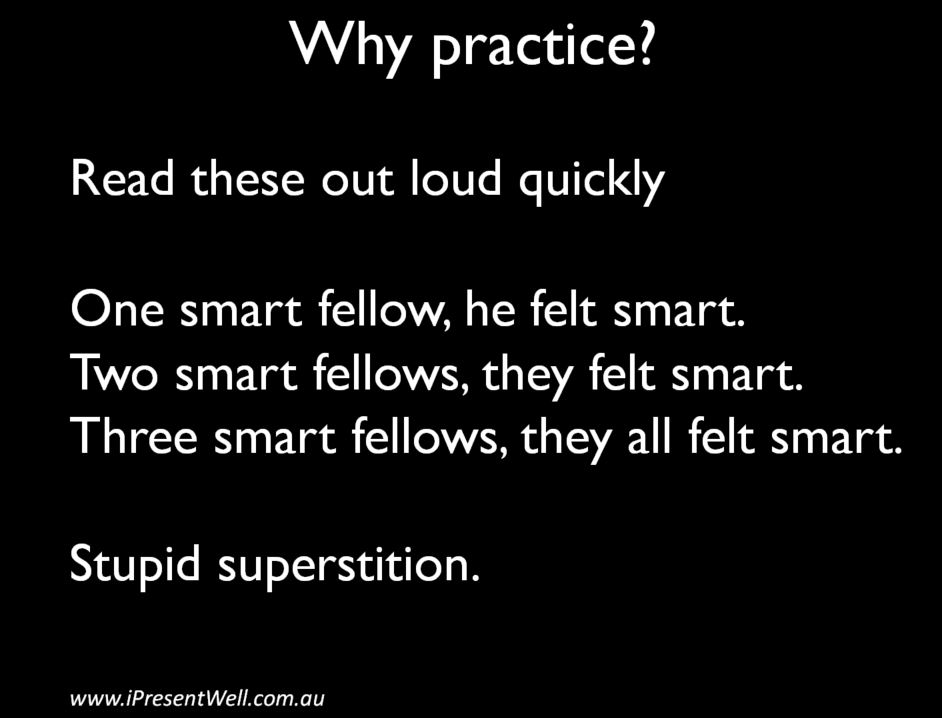 How do you get to Carnegie Hall?
How do you get to Carnegie Hall?
Practice, practice, practice.
How do get better at tennis? Practice, practice, practice.
How do you get better at giving a talk?
Practice, practice, practice.
There are different types of practice. Let’s look at them.
Read your presentation
Read through what you are going to say. See if there are gaps or any changes you want to make. Match up your notes to the PowerPoint slides. It’s a good idea to note the slide number (or name) on your notes.
Say it out loud
Speaking is different from reading. When you read it out loud you will become aware of how the words flow, awkward sentences, and where pauses and emphasis should be. If you do want to stress certain words then underline them or highlight them. Remove tongue twisters and words that you find hard to say.
Practice it with some background noise, like a radio or a CD playing. When you really deliver it there will be background noise such as people moving around, doors opening and closing. You will need to speak loudly enough to be heard.
Deliver it to someone – the dog if no-one else will listen
I know it’s embarrassing but if you can get someone to listen to you they can give you some feedback. Make sure it’s a kind person. It will also give you a sense of what the talk sounds like when someone is listening. Your dog or cat is unlikely to be too interested in your topic but they won’t say nasty things either!
Check your timing
When most of us present in public we get anxious and tend to speak faster. I think we are trying to get to the finish point quickly which can leave a big gap at the end. Or you might get distracted on some point and spend a long time on it meaning you run out of time towards the end. Either way it’s useful to have a sense of the timeframe for your talk. The way to do this is to note on your script the time at different parts. For example, how long did the introduction take, when you finish the first point how much time should be gone?
This will be useful when you are delivering your presentation as you can see if you are ahead or behind. If you are ahead of time then you can make yourself slow down or elaborate on certain points. If you have fallen behind time then you may have to leave out some points.
In the venue
Practicing at home is great but it’s very different from the venue. The layout will be different, the place to put your notes and your water, where you will stand. Being in the venue gives you a much better sense of what the talk will be like. It also helps you visualise the talk and imagine yourself giving a great presentation. So if you are at a conference make sure you find your venue during a break, stand at the podium and get used to the feel of the room.
Practice using the equipment
 Beginners make the mistake of assuming all computers are the same. “If it works on my computer at home it will surely work in the presentation venue.” They are almost invariably wrong.
Beginners make the mistake of assuming all computers are the same. “If it works on my computer at home it will surely work in the presentation venue.” They are almost invariably wrong.
Firstly the software may be different, or a different version, or may do funny things to your fonts or images (this is a good reason to use standard fonts in your PowerPoint).
Secondly the physical computer will be different. The buttons may be in different places, the USB drive may be in a different place, there might not be a mouse so you have to use that microscopic toggle thing in the middle of the keyboard. Even a simple task of pressing a computer key can be a challenge when anxiety has turned your hands into paws.
A very common problem is getting to the venue and starting to load your presentation only to find that a password is required. And you don’t know it. And nobody else knows it either. Or even more basic – that the cabinet the computer is in is locked and you can’t put your USB memory stick in. All of these things have happened to me (once!) – and all can be prevented by checking out the venue.
Borrow from an expert
A strategy some people use is to think of a speaker they admire. Then imagine how they would present. Visualise their confidence, their presence. Now practise your talk but imagine you are them. Take on some of their qualities for your presentation.
Memorise your first lines
It’s a good idea to learn your opening few lines off by heart. This is when you will be most nervous. If you can get off to a good start it calms you down for the rest of the talk. If you have a particular opening you use regularly, then learn it by heart.
Only for the brave
It’s a scary thing to listen to yourself on an audio tape. It doesn’t sound like the you, you know. That’s because we hear our voices from inside our head while others hear the real us. It can take a while to get used to hearing your own voice. But if you can bear it, it will help you work out where you might change your pace, emphasis, clarity and volume.
Even more daunting is to watch yourself on video. Most people’s reaction is to say “I don’t look like that do I?” Once again it will give you insights into how you come across. But generally I only recommend this once you have developed some confidence.
So in summary some practice strategies are:
- read your presentation
- say it out loud
- deliver it to a friendly person (or dog)
- check your timing
- practice in the venue
- practice using the equipment you will be using
- borrow from an expert
- memorise your first few lines
And finally – practice, practice, practice.
 Last week I was visiting the University of Queensland, which aside from having a beautiful campus, is the home to an astonishing success story, the three minute thesis.
Last week I was visiting the University of Queensland, which aside from having a beautiful campus, is the home to an astonishing success story, the three minute thesis. The idea is simple. You get three minutes and one slide to explain your research to a non-specialist audience. The challenge is to condense two or three years work into something meaningful in three minutes.
The idea is simple. You get three minutes and one slide to explain your research to a non-specialist audience. The challenge is to condense two or three years work into something meaningful in three minutes.

